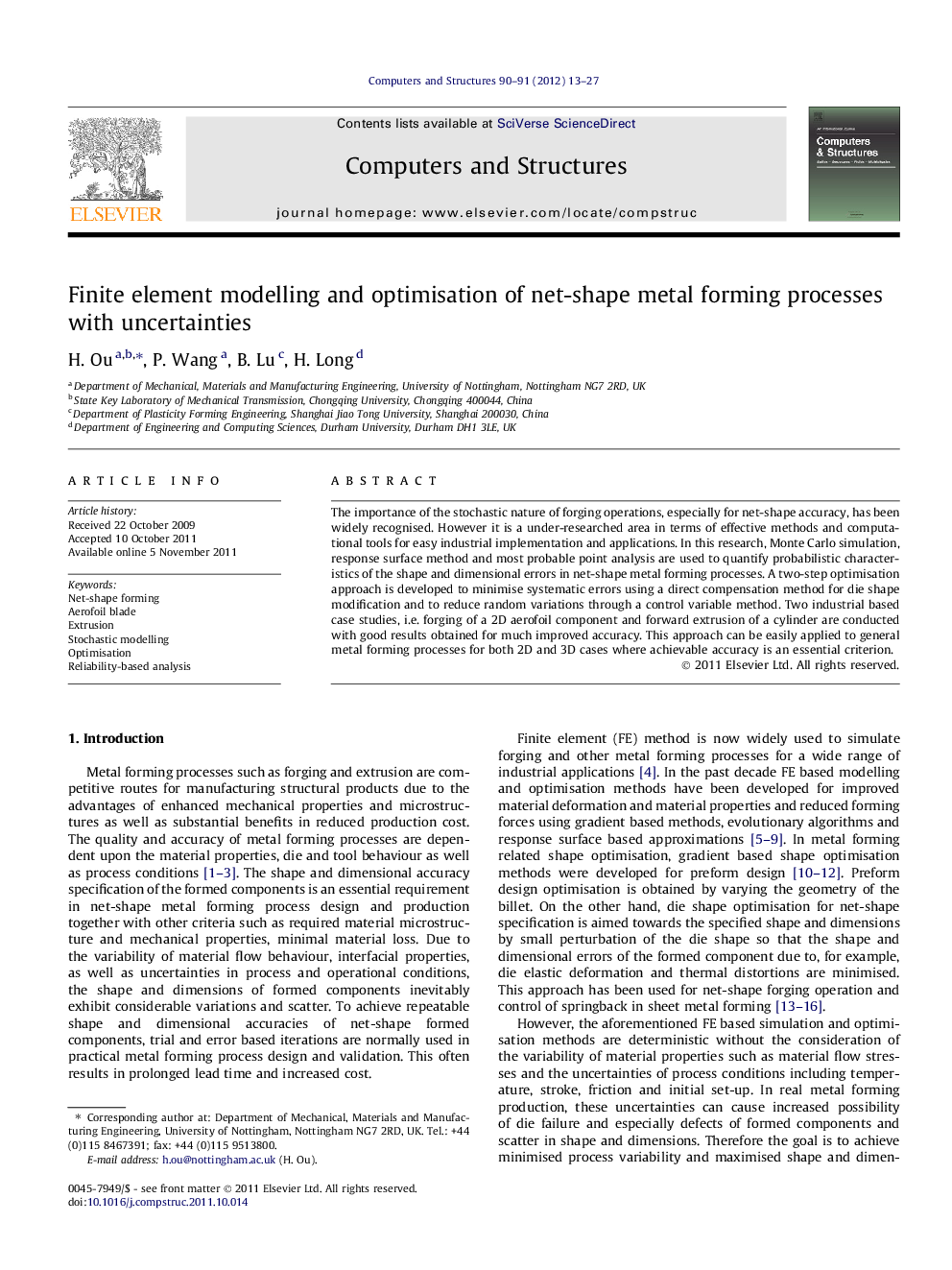| Article ID | Journal | Published Year | Pages | File Type |
|---|---|---|---|---|
| 6924803 | Computers & Structures | 2012 | 15 Pages |
Abstract
The importance of the stochastic nature of forging operations, especially for net-shape accuracy, has been widely recognised. However it is a under-researched area in terms of effective methods and computational tools for easy industrial implementation and applications. In this research, Monte Carlo simulation, response surface method and most probable point analysis are used to quantify probabilistic characteristics of the shape and dimensional errors in net-shape metal forming processes. A two-step optimisation approach is developed to minimise systematic errors using a direct compensation method for die shape modification and to reduce random variations through a control variable method. Two industrial based case studies, i.e. forging of a 2D aerofoil component and forward extrusion of a cylinder are conducted with good results obtained for much improved accuracy. This approach can be easily applied to general metal forming processes for both 2D and 3D cases where achievable accuracy is an essential criterion.
Related Topics
Physical Sciences and Engineering
Computer Science
Computer Science Applications
Authors
H. Ou, P. Wang, B. Lu, H. Long,
